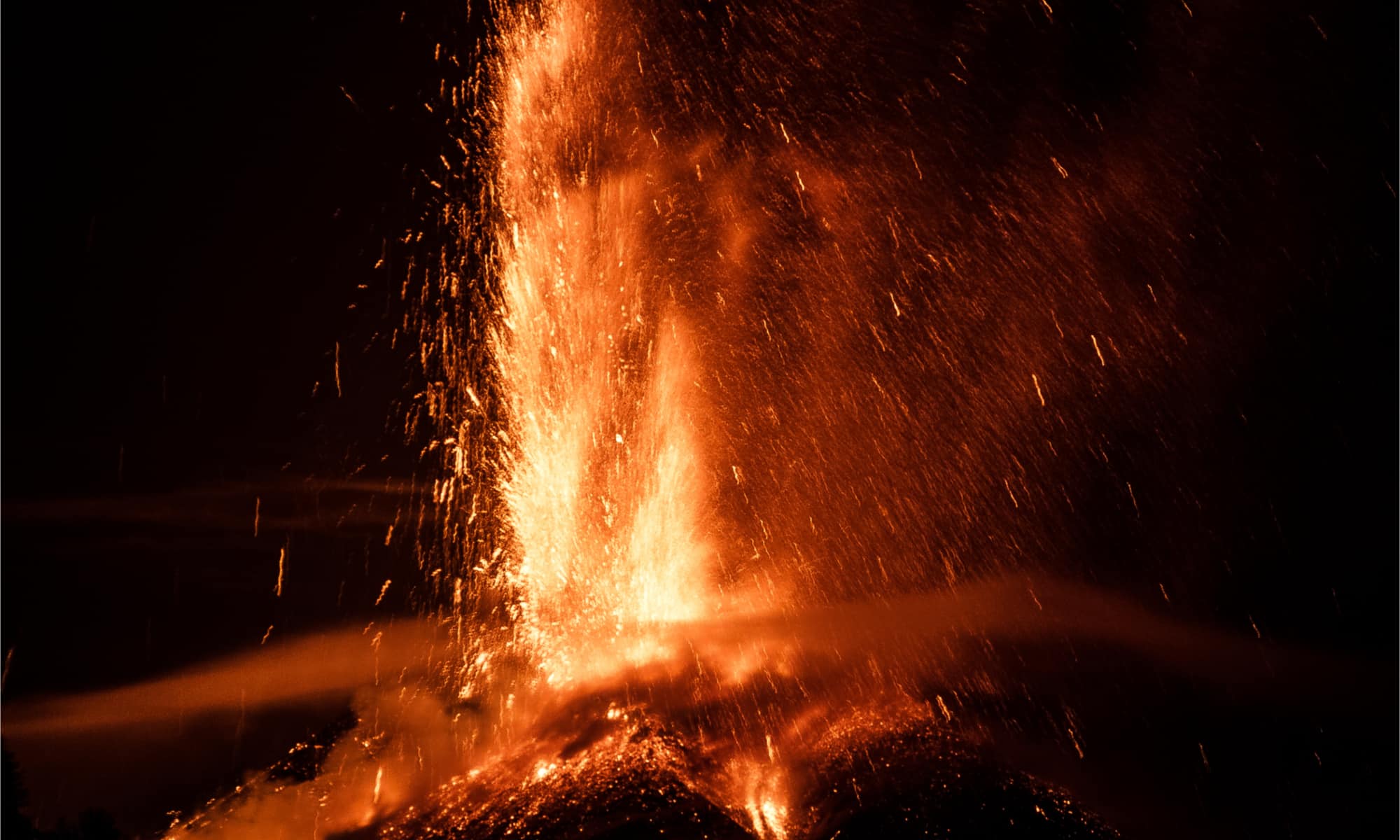Volcanoes work in a fascinating manner, and it’s constantly dependent on location and what goes on beneath the earth’s surface. In Europe, much of the volcanoes to be found there have formed because of shifting tectonic plates.
The tectonic plates slide and crunch along one another and form volcanoes and mountains. When that happens, magma is accessed through fissures and vents, and that’s how the volcanoes are distinguished.
Magma leaves the chambers thanks to the heat and gasses and becomes lava when it comes out of a volcano. Over the years, the volcanoes grow and expand and eventually grow extinct or dormant.
We consider Europe a broad swath of countries that include Iceland and the volcanoes nestled there.
There are five major types of volcanoes we will want to know about. They include:
- Cinder Cone: The cinder cone volcanoes tend to look typical and have a cone shape. They are made of pyroclastic fragments that loosely collect together to make the volcano.
- Complex: A complex volcano is made of various volcanic materials and has multiple vents. A vent is where the magma is released from its chamber.
- Shield: This volcano type is lower to the ground, and the lava spews outward, forcing it to grow in a shield-like shape.
- Spatter Cone: Spatter cones tend to spatter out material and are built of pyroclastic fragments that weld together.
- Strato-volcanoes/Composite: The typical strato-volcano is composed of alternating layers of ash and lava to build a solid structure. This is a common volcano type.
Europe has a rich volcanic history that we are going to explore. Much of the world today wouldn’t exist without volcanoes and how they molded landscapes through their immense power.
How Many Volcanoes Are in Europe?
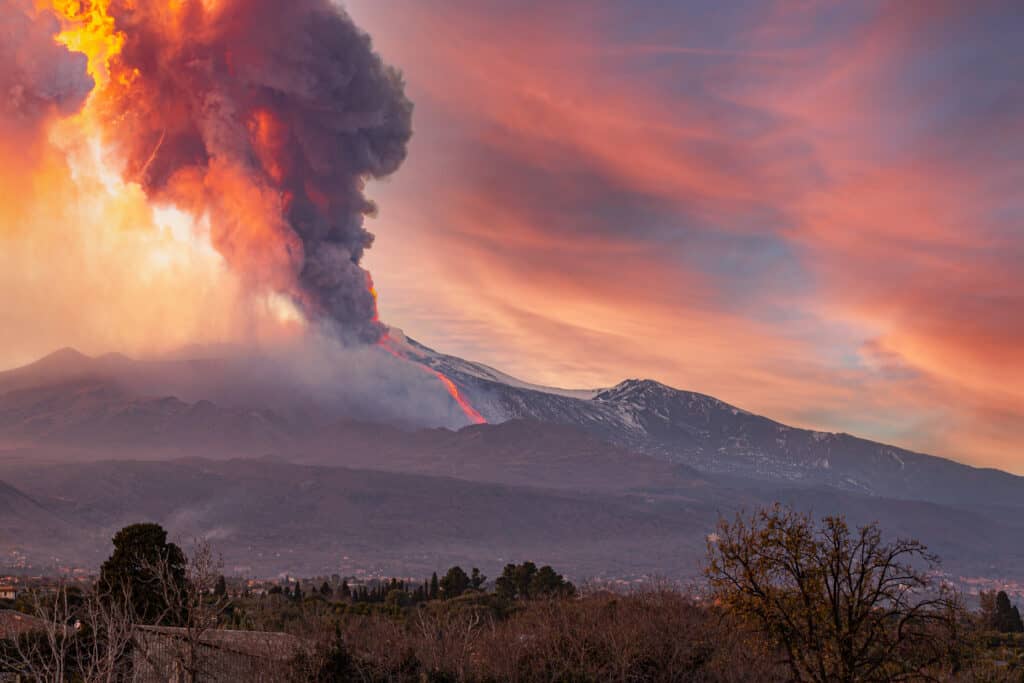
There are 82 volcanoes in Europe.
©Alanstix64/Shutterstock.com
What is considered Europe is debated at times, but Iceland is regarded as a part of it in almost all discussions. They became a part of the EEA agreement in 1994, so they are considered part of Europe in both political and cultural standing.
This is relevant because there are 82 volcanoes in Europe, and 32 can be found in Iceland, the land of ice and fire. Iceland is known as such for obvious reasons. It is a land that has a lot of glacial features but also volcanic eruptions.
In 2010, a volcanic eruption surprised people because, without airplanes, we wouldn’t have known about it. This was a startling insight into how future volcanic eruptions could cause chaos for us.
Iceland’s Eyjafjallajökull ejected an ash plume that disrupted all air traffic. The ash was toxic to plane engines, so nobody wanted to be flying in the vicinity. This is important because it was an event that brought attention to Europe’s volcanoes in a way that hadn’t happened in the modern day before.
How Many Active Volcanoes Are in Europe?

There are currently 47 active volcanoes across Europe.
©Creative Travel Projects/Shutterstock.com
Volcanoes can be classified in three ways: active, dormant, and extinct. Active volcanoes are volcanoes that have had activity in recent times and are still connected to a magma pocket.
Dormant volcanoes may or may not have had activity and are still connected to magma. Extinct volcanoes likely have not had any activity and are no longer linked to magma. This usually happens because, over time, vents can move or change.
Over time magma might not be able to propel itself enough to make it through the earth’s mantle, which is where it needs to exit to become lava.
There are 47 active volcanoes throughout Europe, and they can be found in the following countries:
- Armenia- 5
- Germany- 2
- Greece- 6
- Iceland- 2
- Italy- 8
- Russia- 4
- Spain- 3
- Turkey- 17
As you can see, volcanoes litter the different countries that make up Europe. Some are more well known than others and pose a higher risk. Let’s take a look at some of the active volcanoes out there.
Mount Vesuvius
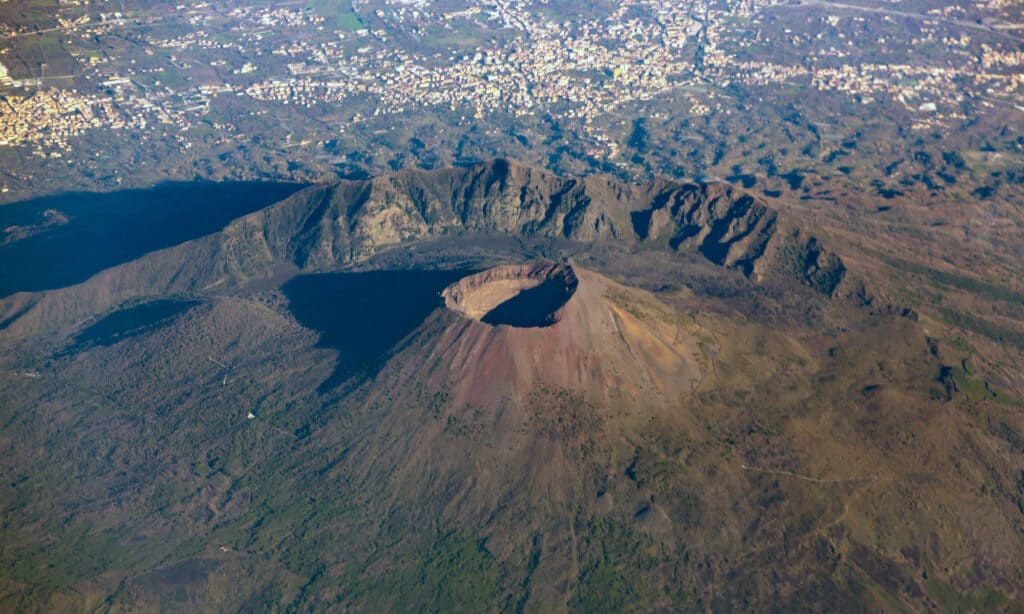
Mount Vesuvius is the volcano that erupted and destroyed Pompeii.
©iStock.com/Cylonphoto
At first thought, one doesn’t consider Italy the peak of volcanic activity, but it is. Italy has 12 different volcanoes and is home to the famous Mount Vesuvius.
This volcano is famous because it is the volcano that decimated Pompeii and left us the remnants to study hundreds of years later.
Mount Vesuvius is a strato-volcano with a humped back. That means it has its classic cone shape but with a large caldera to produce the humped back. It was formed from two tectonic plates colliding and rolling over one another. The magma pushed its way upward and made the volcano.
Known for its eruptions, Mount Vesuvius last made its mark in March of 2022 with some earthquakes. It is currently classified as dormant, with the potential to erupt again.
When Vesuvius erupts, it tends to erupt for five years at a minimum. This volcano’s last eruption lasted thirty years, starting in 1913 and ending in 1944. It explodes outward when spewing and has lava fountains and thick lava flows. Vesuvius has had consistent activity for the last few hundred years.
Mount Etna
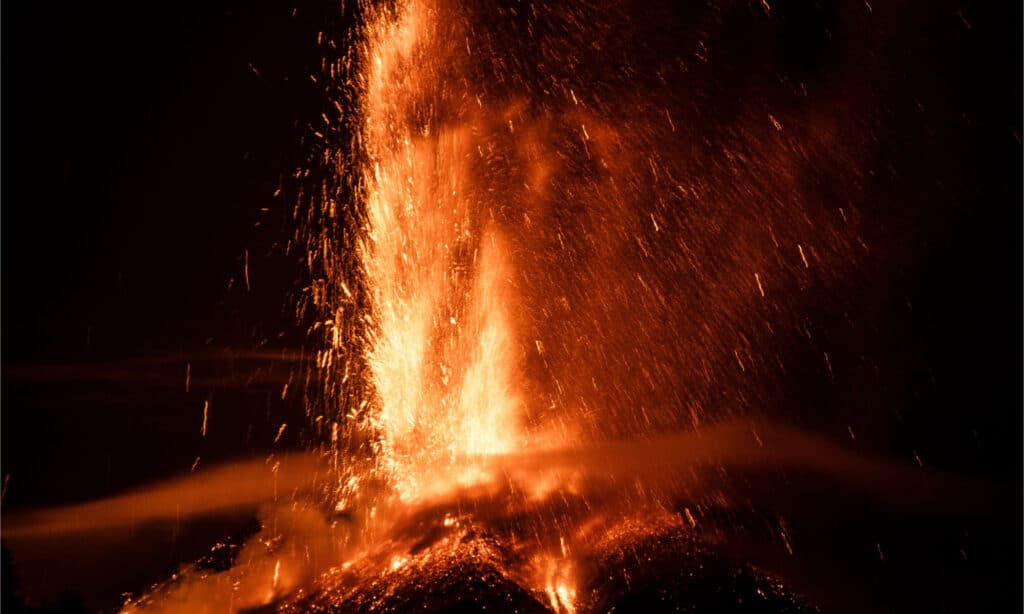
Etna is one of the most active volcanoes in the world.
©Wead/Shutterstock.com
Another volcano located in Italy, Mount Etna’s claim to fame is that it is one of the most active volcanoes in the world. It is a complex strato-volcano that is currently active and erupted again most recently in June, 2022.
Located in the beautiful mountainous Sicily, Mount Etna itself has a rich history akin to Vesuvius. Its recorded eruptions can be followed back for more than 2000 years. The eruptions are explosive in nature and have thick, continuous lava flows.
Etna means “mountain” in Italian, so many just refer to it as Etna. In 2021, Mount Etna grew by 100 feet for six months because it spewed so much lava and ash and built itself up.
Italy’s second-largest city is located in the shadow of Etna. The people of Catania know the risk and have decided it is worth it to live in their treasured city. Mount Etna’s continuous eruptions mean they think they know enough about how the volcano functions to remain safe.
That is a personal choice, and hopefully, Mount Etna’s activity remains the same, and there is no decimating lave flows any time soon.
Marsili
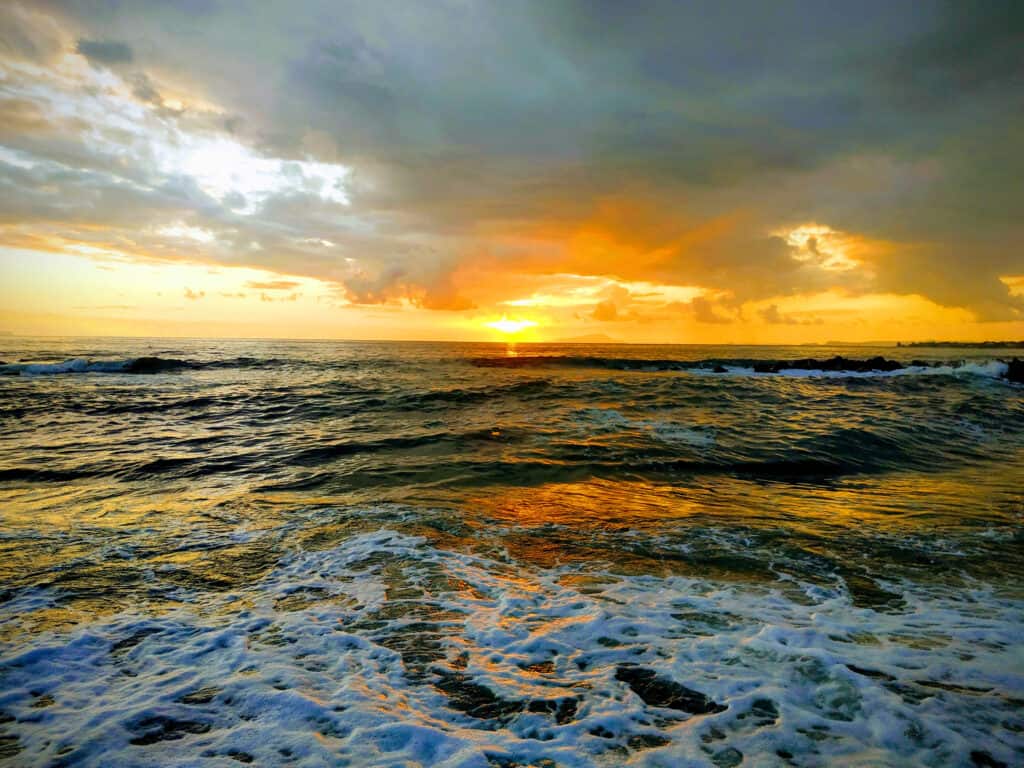
The Tyrrhenian Sea is situated near where the African and Eurasian Plates meet; therefore mountain chains and active volcanoes such as Mount Marsili are found in its depths.
©Shmygelska87/Shutterstock.com
Yet another Italian behemoth, Marsili, isn’t as visually a threat as Mount Vesuvius and Mount Etna, yet it poses a much more significant threat. This is because it is hidden beneath the sea surrounding Italy.
Hiding around 110 miles off the coast of Naples, Marsili is a seamount or a submarine volcano. This means it is hiding below the waves, creating volcanic activity that is more or less unseen by the general public.
It is 1400 feet below the ocean’s surface and has been active as long as the rest of the volcanoes of Italy have been. A strong enough eruption could potentially disrupt the ocean and cause a tsunami to occur.
Italy has a rich history and presence of volcanoes, with Marsili being the largest active volcano globally. Marsili is humongous, but you can’t see it because it is submerged deep in the ocean.
If Marsili were to trigger a tsunami, it could decimate the coasts of Sicily with almost no warning because of how close they are to it. Marsili is around a million years old and is the hidden hazard of Italy.
Eyjafjallajökull
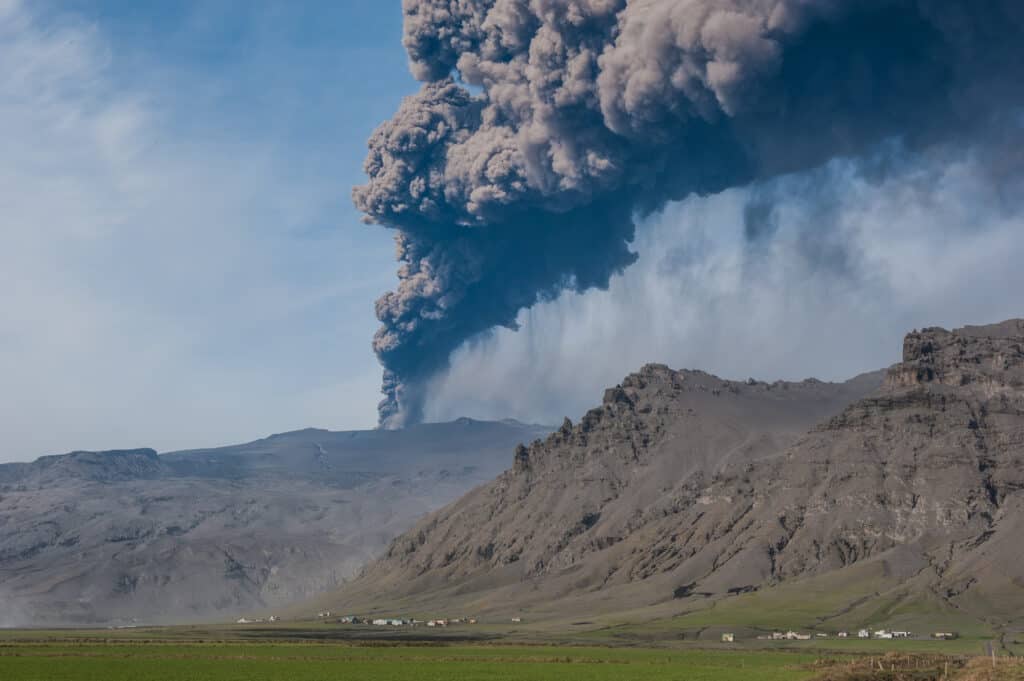
Eyjafjallajökull means “island-mountain under a glacier” and last erupted in 2010.
©Petra Schneider/Shutterstock.com
Mentioned at the beginning of this article, Eyjafjallajökull is located in the tundra of Iceland, and its name means “island-mountain under a glacier.” This is the perfect title for a volcano in such lands.
This volcano was dormant for many years before its famous eruption in 2010, where it ruined air traffic for weeks afterward and made its mark in volcanic history.
It is a part of the sixth-largest glacier in Iceland and has a volcanic caldera. Previously, its history was that it produced a glacial lake outpouring and caused immense damage. The latest eruption had enough smoke and gas in the air that people who lived in the vicinity had to be evacuated.
Santorini
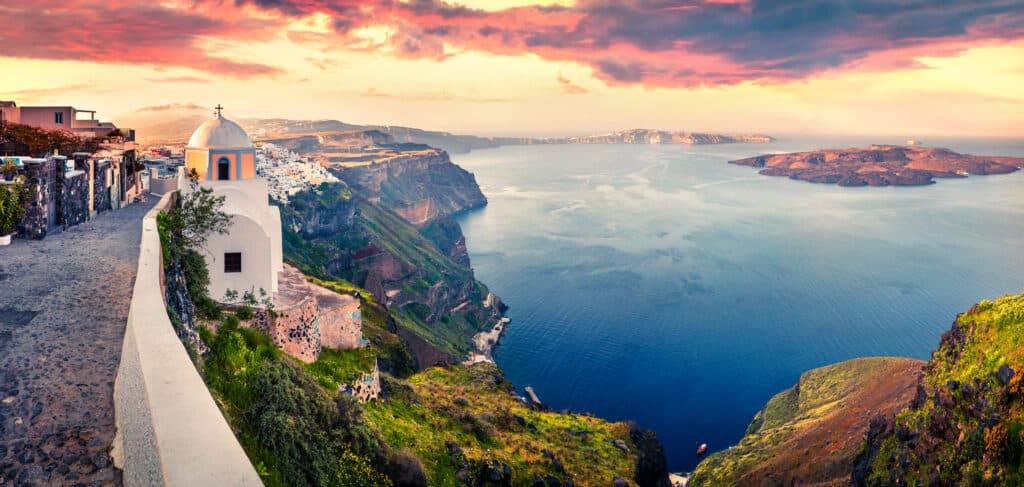
Santorini used to be one island, but past eruptions turned it into a series of islands.
©Andrew Mayovskyy/Shutterstock.com
A little different from previously listed volcanoes, Santorini is a group of islands located in Greece. The islands are a series of volcanic islands that you can find in the south of the Aegean Sea. These islands are about 125 miles away from Greece’s mainland and are leftover bits and pieces from the last eruptions.
Santorini was once one island with people living on it, but its eruptions destroyed all of that, and it is now a complex strato-volcano with a caldera.
Luckily Santorini has had nothing but small earthquakes in recent years and is considered a dormant volcano, though it had a massive one in 1956. No actual eruptions have happened since 1950, thanks to its dormant status.
Santorini is considered beautiful and has colorful cliffs and villages dotting along with it. This can seem risky considering it has powerful eruptions, but people can choose the beauty and danger over assured safety.
Up Next
Thank you for reading! Have some feedback for us? Contact the AZ Animals editorial team.

